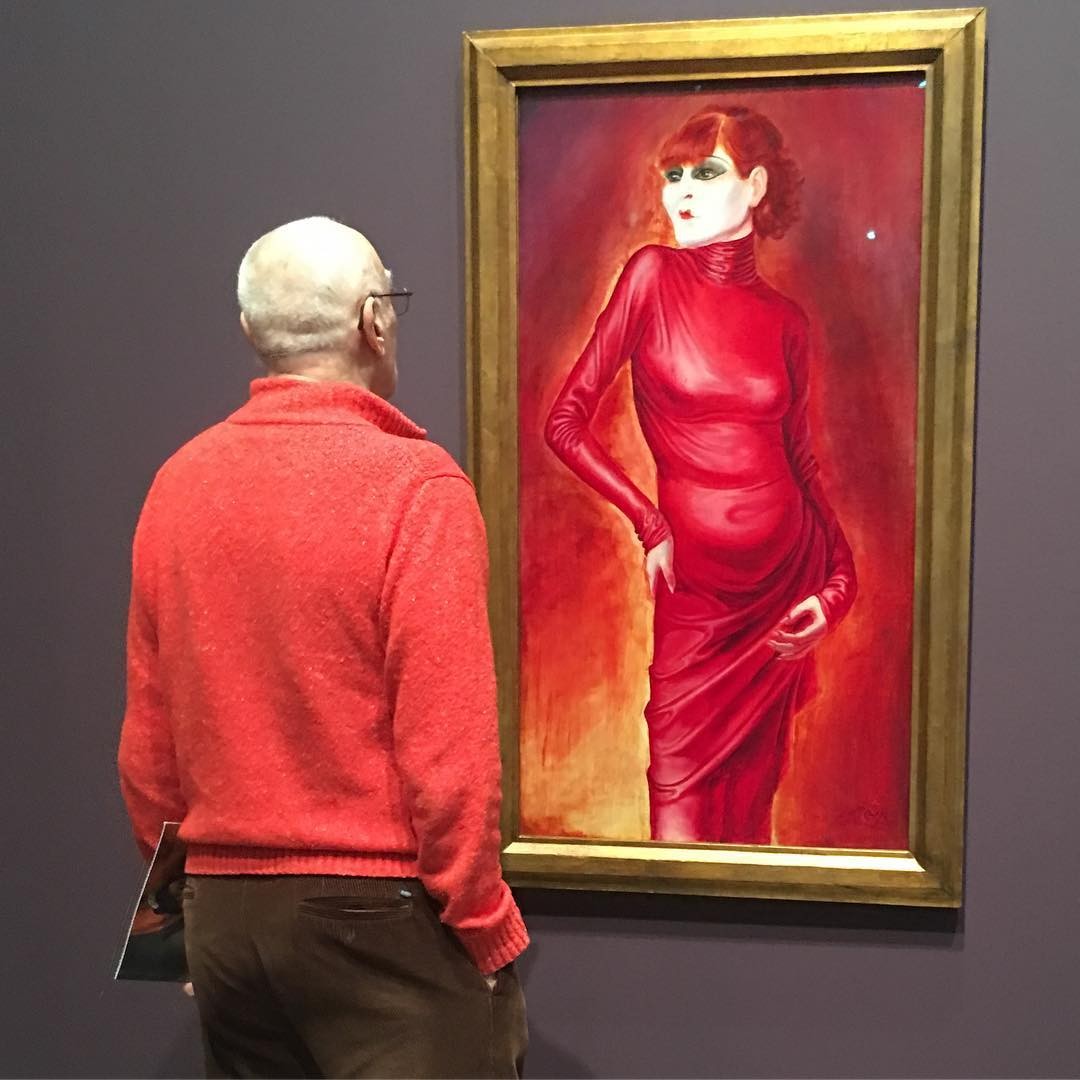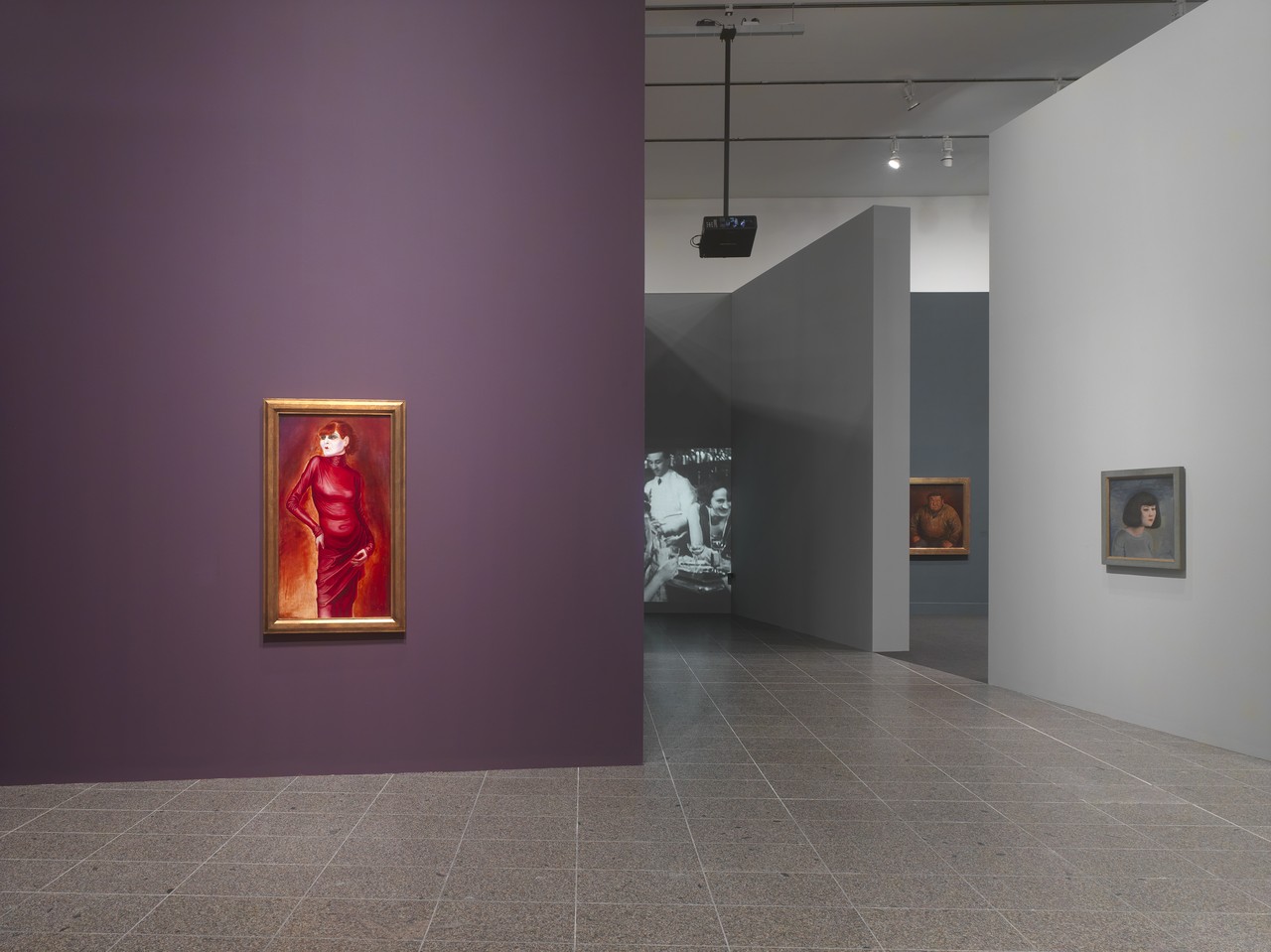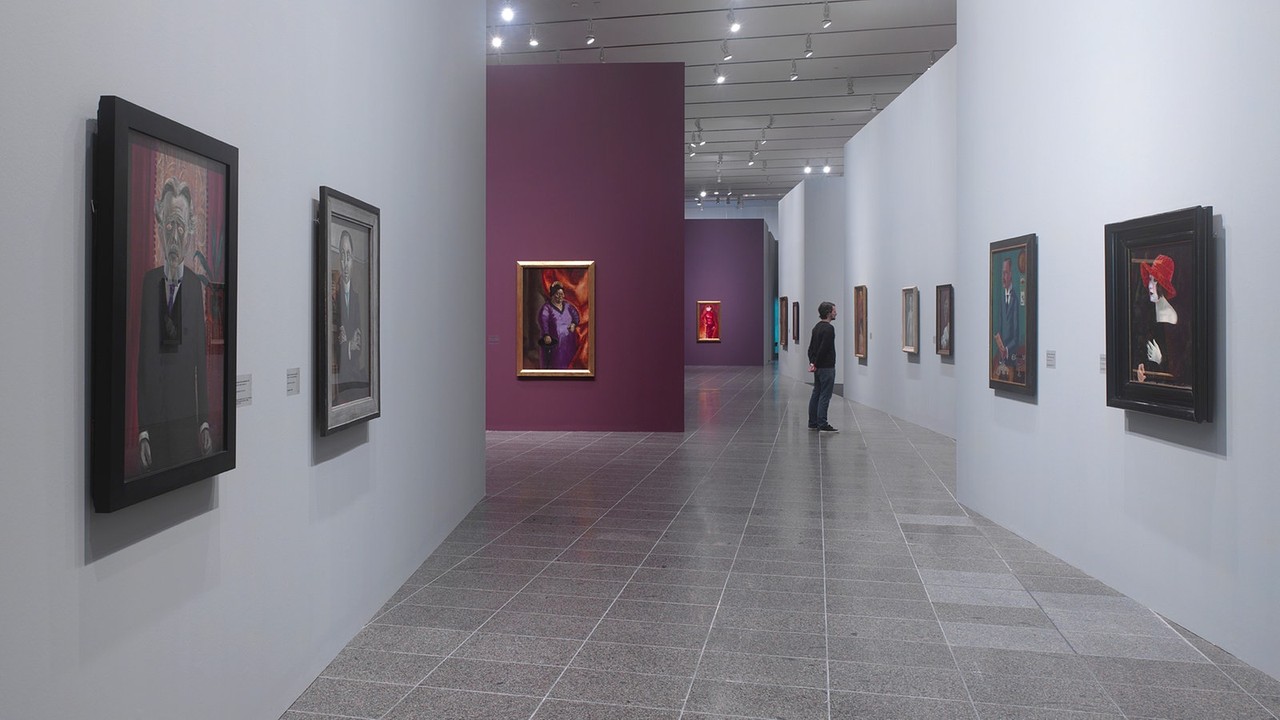Otto Dix
The Evil Eye
11 Feb - 28 May 2017
Otto Dix (1891 - 1969) – the celebrated painter and notorious enfant terrible – spent the intensively creative years 1922 - 1925 in Düsseldorf. During this period, as a member of the revolutionary artist’s group Das Junge Rheinland (Young Rhineland), he developed the critical handwriting that made him an unmistakable figure within 20th century art.
The exhibition Otto Dix – The Evil Eye is devoted to this decisive phase of his career. On view will be approximately 200 paintings, watercolors, and prints from German and international collections.
When the destitute Dix left Dresden for Düsseldorf for the first time in October 1921, he hoped to be welcomed in the Rhineland with exhibition opportunities and lucrative portrait commissions. During the ensuing three years, driven by singular ambition and enormous perseverance, he evolved from an expressive-realist Dada artist into a portraitist who emblematized the Neue Sachlichkeit (New Objectivity). Mercilessly, he fixed his contemporaries’ features on canvas. In 1925, when he moved to Berlin, having matured now as a man and an artist, he was preceded by his reputation as a harsh critic of society.
For the first time, the Kunstsammlung Nordrhein-Westfalen presents with the exhibition Otto Dix – The Evil Eye a monographic exhibition that focuses on these crucial years in Dix’s development.
Dix in Düsseldorf
The young painter and graphic artist from Dresden arrived in Düsseldorf in October of 1921; although flat broke at the time, he was no longer entirely unknown as an artist, and hoped for improved opportunities for exhibiting and for commissions in the Rhineland. With immense ambition, he transformed himself in the ensuing three years from an expressive-veristic Dada artist into a critical portraitist in the spirit of the Neue Sachlichkeit (New Objectivity), who fixed his contemporaries with a pitiless gaze in unsparing images. When he moved to Berlin in 1925, mature now both personally and artistically, the reputation of his "evil eye" preceded him.
In early 1920, Conrad Felixmüller arranged Dix’s initial contacts with the Düsseldorf art scene, introducing him to Otto Pankok, Gert Wollheim, and other artists of avant-garde group Das Junge Rheinland (Young Rhineland). One member of the circle was the art dealer Johanna Ey, whose gallery was a lively meeting place for young Rhenish artists during the period.
Johanna Ey became a strong supporter of Dix’s career when he still lived in Dresden. Up until this point, he had suffered from the unmarketability of his works, but in the Rhineland, things turned around quickly: Johanna Ey reported initial sales to him as early as September of 1920. When she finally met Dix, she was fascinated by the dandyish young man. She offered him lodging in an adjacent room in her gallery, and made him one of the key personalities of her dealership.
Also among early patrons was the collector and physician Hans Koch, who had contacts with the Dresden art scene even before Johanna Ey, and who commissioned his own portrait from Dix in 1921. During this period, Martha Koch, the collector's wife, became Dix’s lover – the two married in spring of 1923. None of which, however, interfered with the professional or private relations of those involved.
For Dix, the three years in Düsseldorf were immensely productive, and were characterized by rapid artistic development: the greater portion of his watercolor output in, for example, was completed by 1923.
Beginning in 1922, he attended the Düsseldorf Art Academy; of decisive importance was the instruction he received in printing methods. He employed the aquatint technique he learned there, among others, in the celebrated cycle of etchings entitled Der Krieg (War, 1924), a drastic confrontation with the machinery of modern military combat. Many other pivotal works in color lithography – among them Cripples, Sailor with a Girl, and Leonie – date from this period as well.
The inspiring art and gallery scene in the Rhineland, encouraging level of success and hence growing material security, as well as private happiness: all of these factorsin concert had a stabilizing effect on Dix’s circumstances, and even brought him a certain established status within society – and they would influence his painterly and portrait style in subsequent years.
Beginning in 1924, Dix turned toward the Neue Sachlichkeit manner, deploying old master glazing techniques in increasingly cool, analytical portraits. Up to the present, Otto Dix is regarded as a celebrated and notorious portraitist who fixed his subjects with an "evil eye," staging them in violation of conventional aesthetic norms.
Curator: Dr. Susanne Meyer-Büser
The exhibition Otto Dix – The Evil Eye is devoted to this decisive phase of his career. On view will be approximately 200 paintings, watercolors, and prints from German and international collections.
When the destitute Dix left Dresden for Düsseldorf for the first time in October 1921, he hoped to be welcomed in the Rhineland with exhibition opportunities and lucrative portrait commissions. During the ensuing three years, driven by singular ambition and enormous perseverance, he evolved from an expressive-realist Dada artist into a portraitist who emblematized the Neue Sachlichkeit (New Objectivity). Mercilessly, he fixed his contemporaries’ features on canvas. In 1925, when he moved to Berlin, having matured now as a man and an artist, he was preceded by his reputation as a harsh critic of society.
For the first time, the Kunstsammlung Nordrhein-Westfalen presents with the exhibition Otto Dix – The Evil Eye a monographic exhibition that focuses on these crucial years in Dix’s development.
Dix in Düsseldorf
The young painter and graphic artist from Dresden arrived in Düsseldorf in October of 1921; although flat broke at the time, he was no longer entirely unknown as an artist, and hoped for improved opportunities for exhibiting and for commissions in the Rhineland. With immense ambition, he transformed himself in the ensuing three years from an expressive-veristic Dada artist into a critical portraitist in the spirit of the Neue Sachlichkeit (New Objectivity), who fixed his contemporaries with a pitiless gaze in unsparing images. When he moved to Berlin in 1925, mature now both personally and artistically, the reputation of his "evil eye" preceded him.
In early 1920, Conrad Felixmüller arranged Dix’s initial contacts with the Düsseldorf art scene, introducing him to Otto Pankok, Gert Wollheim, and other artists of avant-garde group Das Junge Rheinland (Young Rhineland). One member of the circle was the art dealer Johanna Ey, whose gallery was a lively meeting place for young Rhenish artists during the period.
Johanna Ey became a strong supporter of Dix’s career when he still lived in Dresden. Up until this point, he had suffered from the unmarketability of his works, but in the Rhineland, things turned around quickly: Johanna Ey reported initial sales to him as early as September of 1920. When she finally met Dix, she was fascinated by the dandyish young man. She offered him lodging in an adjacent room in her gallery, and made him one of the key personalities of her dealership.
Also among early patrons was the collector and physician Hans Koch, who had contacts with the Dresden art scene even before Johanna Ey, and who commissioned his own portrait from Dix in 1921. During this period, Martha Koch, the collector's wife, became Dix’s lover – the two married in spring of 1923. None of which, however, interfered with the professional or private relations of those involved.
For Dix, the three years in Düsseldorf were immensely productive, and were characterized by rapid artistic development: the greater portion of his watercolor output in, for example, was completed by 1923.
Beginning in 1922, he attended the Düsseldorf Art Academy; of decisive importance was the instruction he received in printing methods. He employed the aquatint technique he learned there, among others, in the celebrated cycle of etchings entitled Der Krieg (War, 1924), a drastic confrontation with the machinery of modern military combat. Many other pivotal works in color lithography – among them Cripples, Sailor with a Girl, and Leonie – date from this period as well.
The inspiring art and gallery scene in the Rhineland, encouraging level of success and hence growing material security, as well as private happiness: all of these factorsin concert had a stabilizing effect on Dix’s circumstances, and even brought him a certain established status within society – and they would influence his painterly and portrait style in subsequent years.
Beginning in 1924, Dix turned toward the Neue Sachlichkeit manner, deploying old master glazing techniques in increasingly cool, analytical portraits. Up to the present, Otto Dix is regarded as a celebrated and notorious portraitist who fixed his subjects with an "evil eye," staging them in violation of conventional aesthetic norms.
Curator: Dr. Susanne Meyer-Büser




